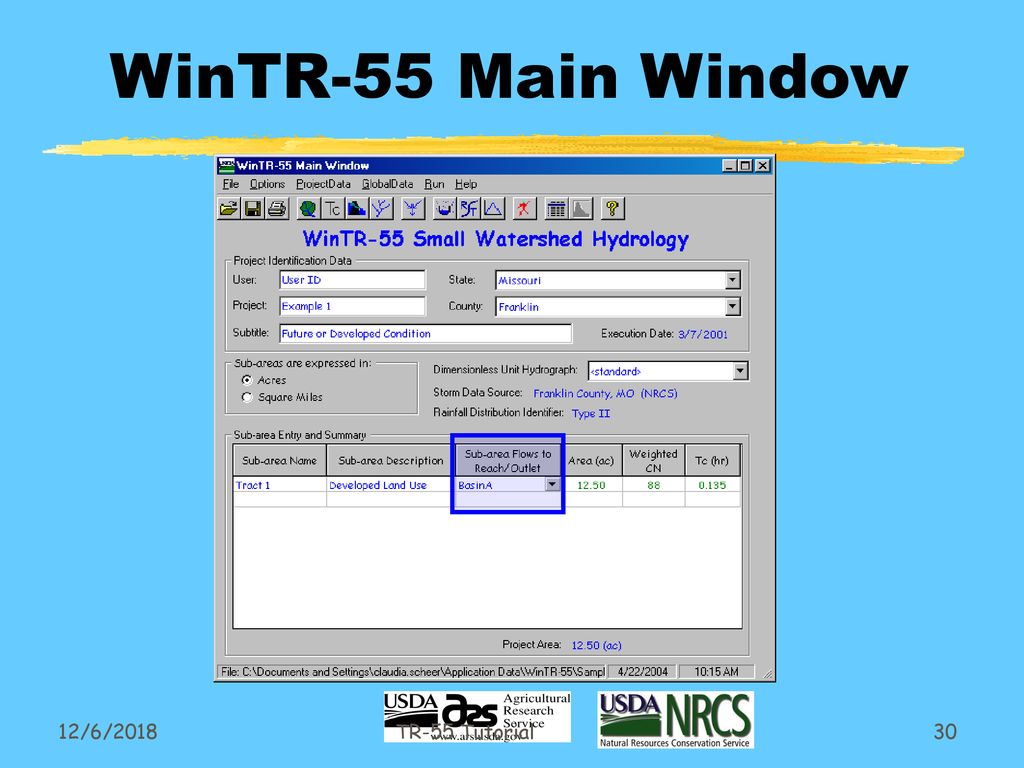

Computer availability eliminated the need for WinTR-55 Guide methods, thus the guide portions (graphs and tables) of the user document have been eliminated. The availability and technical capabilities of the personal computer have significantly changed the philosophy of problem-solving for the engineer.
#Download win tr 55 upgrade#
The current changes include: upgrade the source code to Visual Basic, change the philosophy of data input, develop a Windows interface and output post- processor, enhance the hydrograph-generation capability of the software and flood route hydrographs through stream reaches and reservoirs. Its wide acceptance by public and private users has also indicated where improvements could be made in the procedures and the computer program.Ī WinTR-55 work group was formed in the spring of 1998 to modernize and revise the Technical Release and the computer software. The computer program became a standard tool to analyze peak flow changes caused by urbanization in many locations. Time of concentration was estimated by splitting the hydraulic flow path into separate flow phases (SCS, 1986). In June 1986 major revisions were made in TR-55 by adding three rainfall distributions (Type I, IA and III) and programming the computations.
#Download win tr 55 manual#
The first issue involved manual methods and assumed the NRCS Type II rainfall distribution for all calculations. Technical Release 55 (TR-55) Urban Hydrology for Small Watersheds was first issued in January 1975 as a simplified procedure to calculate the storm runoff volume, peak rate of discharge, hydrographs and storage volumes required for storm water management structures (SCS, 1975). Multiple sub-areas can be modeled within the watershed. Hydrographs are routed downstream through channels and/or reservoirs.

The model generates hydrographs from both urban and agricultural areas and at selected points along the stream system. WinTR-55 is a single-event rainfall-runoff small watershed hydrologic model.


 0 kommentar(er)
0 kommentar(er)
